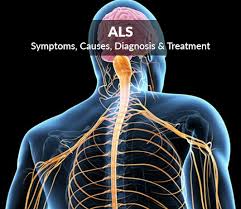Highlights
- •PolyP is enriched in human and mouse ALS/FTD astrocytes in vitro and in vivo
- •Excessive polyP released by ALS/FTD astrocytes is toxic to primary MNs
- •In vitro studies indicate that polyP is a new therapeutic target of ALS/FTD
- •Study of human samples indicate that polyP is new hallmark and biomarker of ALS/FTD
Summary
Non-cell-autonomous mechanisms contribute to neurodegenerative diseases such as amyotrophic lateral sclerosis (ALS) and frontotemporal dementia (FTD), in which astrocytes release unidentified factors that are toxic to motoneurons (MNs). We report here that mouse and patient iPSC-derived astrocytes with diverse ALS/FTD-linked mutations (SOD1, TARDBP, and C9ORF72) display elevated levels of intracellular inorganic polyphosphate (polyP), a ubiquitous, negatively charged biopolymer. PolyP levels are also increased in astrocyte-conditioned media (ACM) from ALS/FTD astrocytes. ACM-mediated MN death is prevented by degrading or neutralizing polyP in ALS/FTD astrocytes or ACM. Studies further reveal that postmortem familial and sporadic ALS spinal cord sections display enriched polyP staining signals and that ALS cerebrospinal fluid (CSF) exhibits increased polyP concentrations. Our in vitro results establish excessive astrocyte-derived polyP as a critical factor in non-cell-autonomous MN degeneration and a potential therapeutic target for ALS/FTD. The CSF data indicate that polyP might serve as a new biomarker for ALS/FTD.







